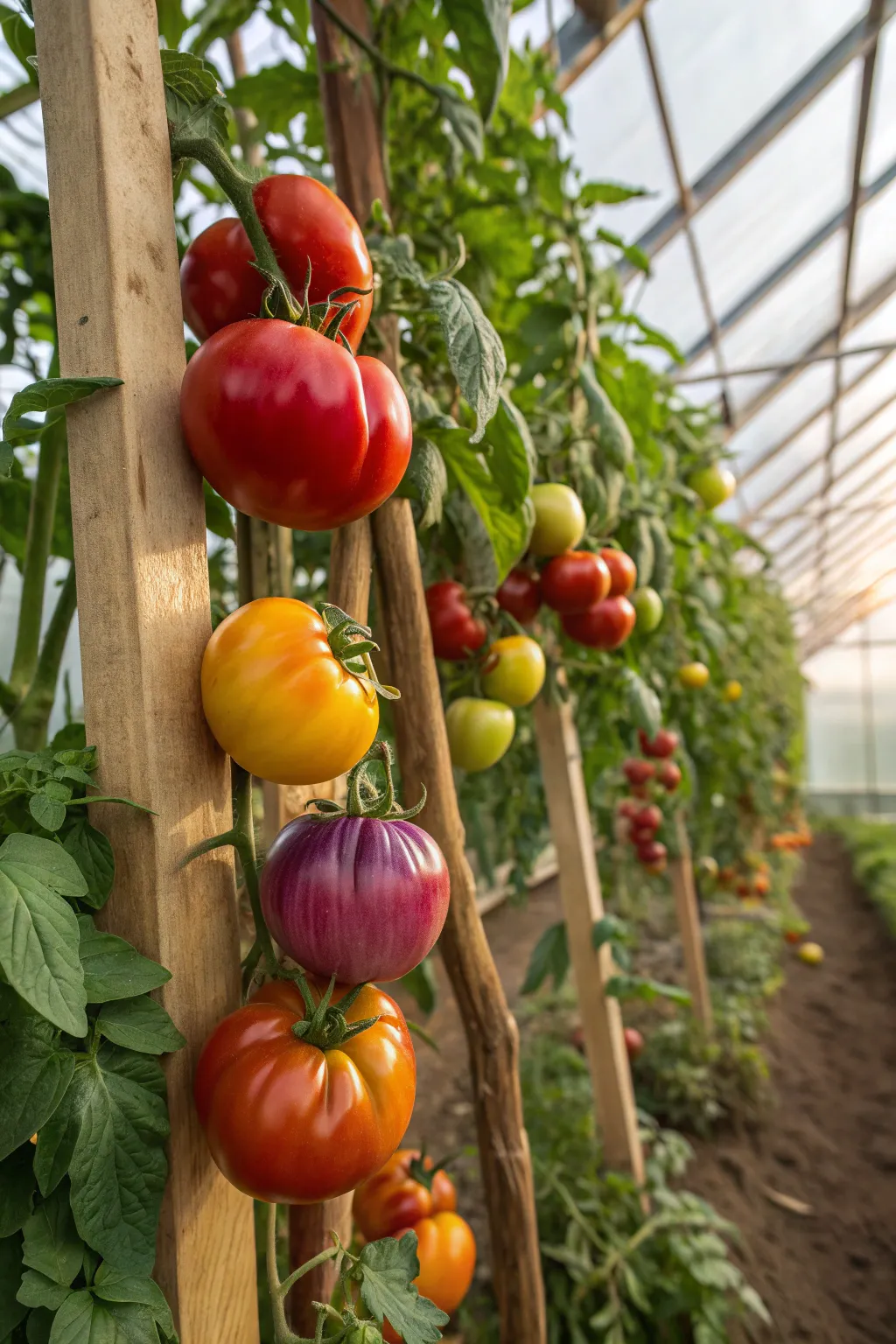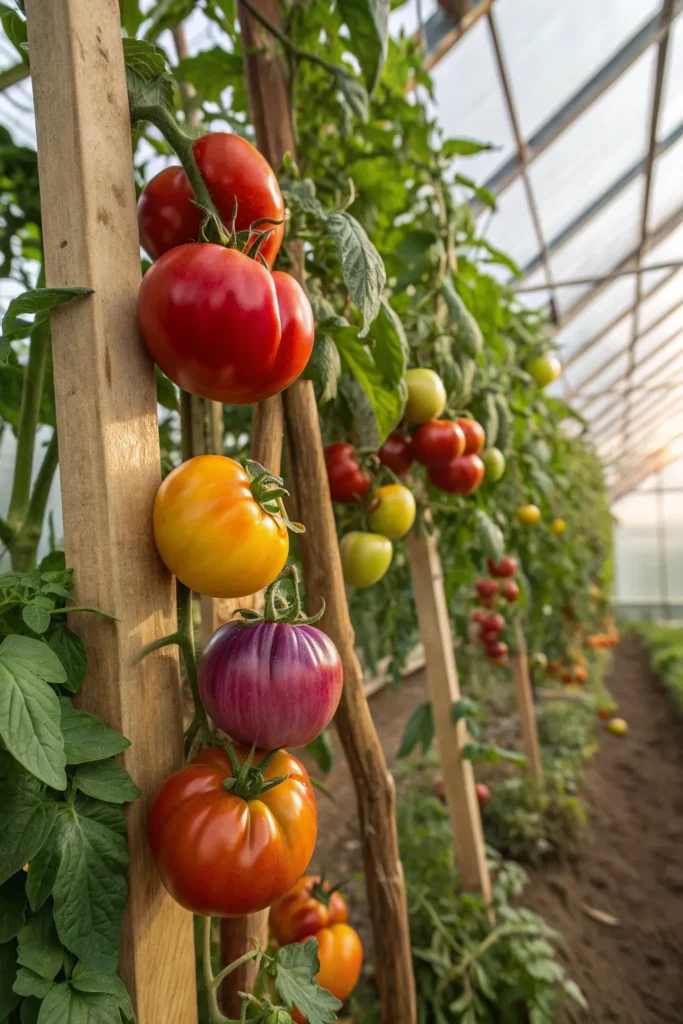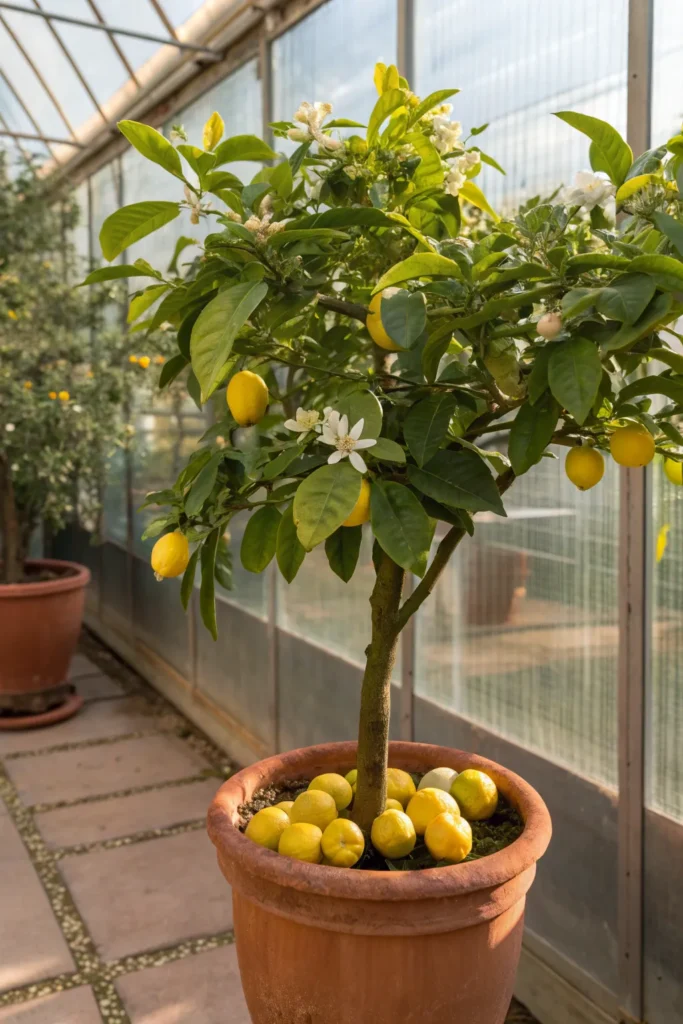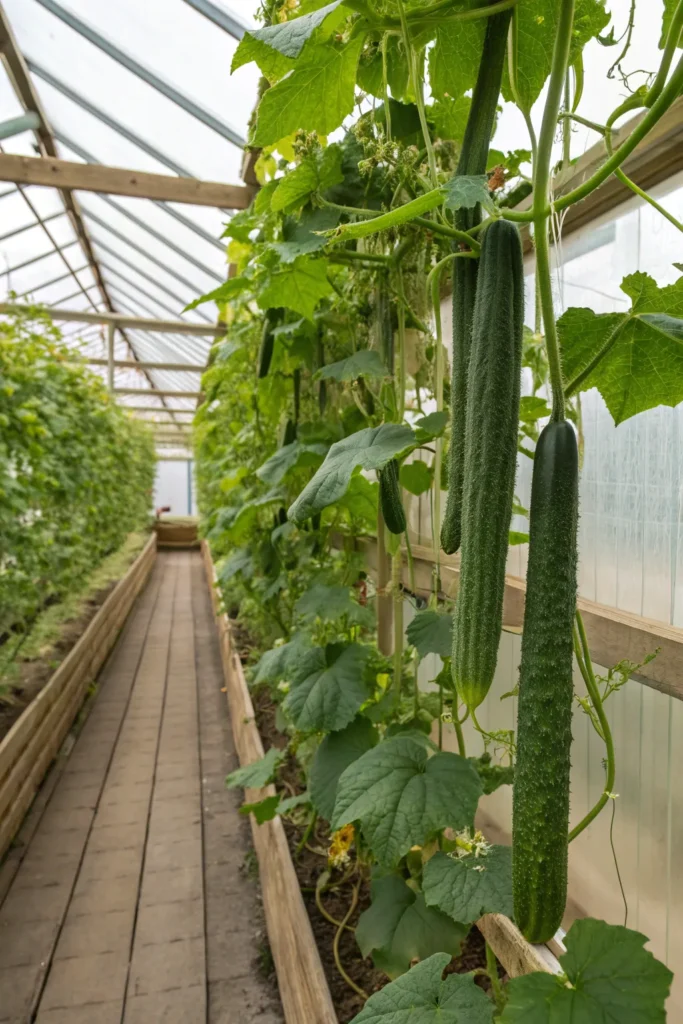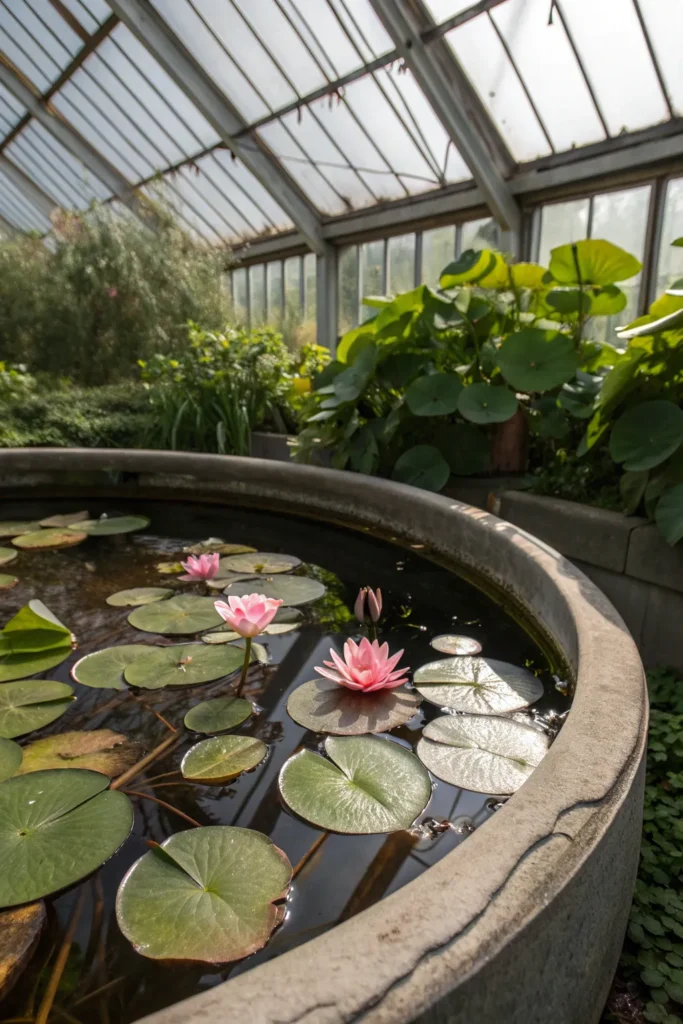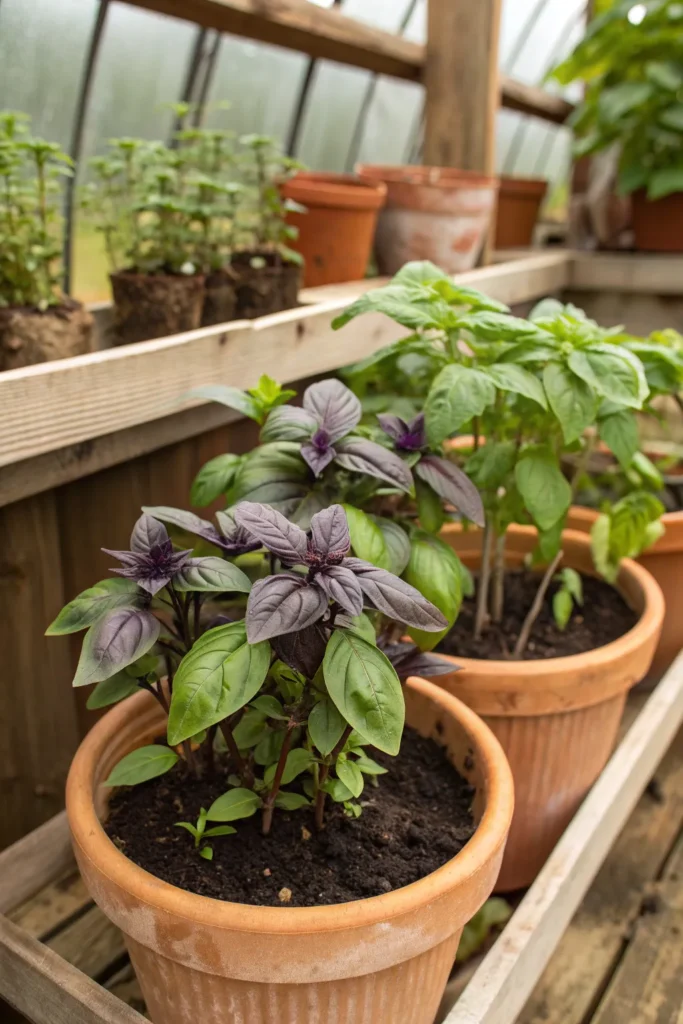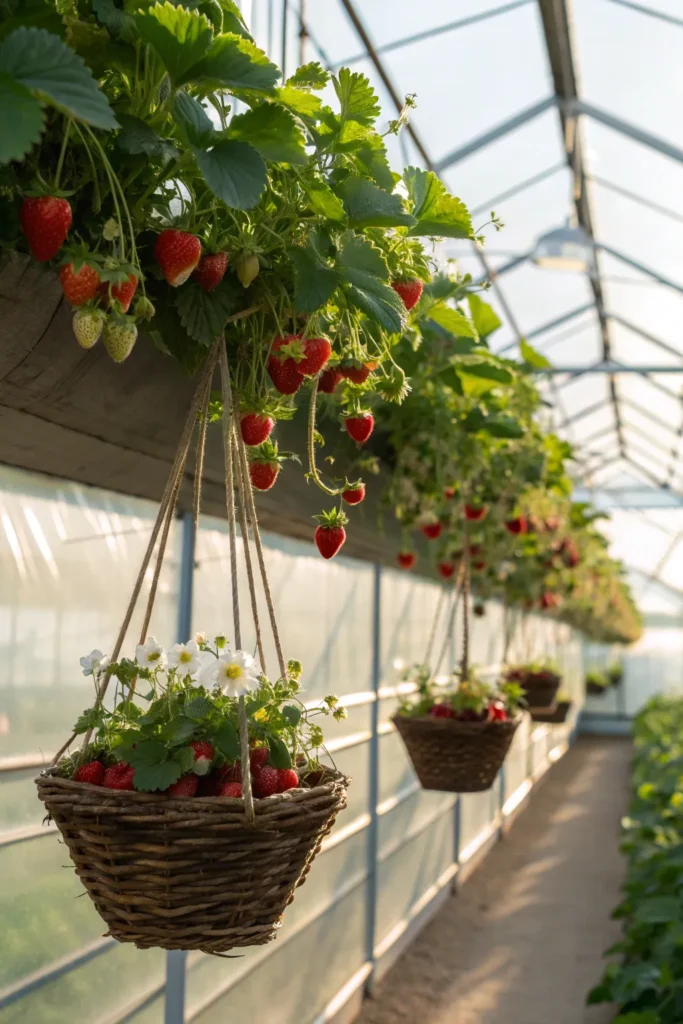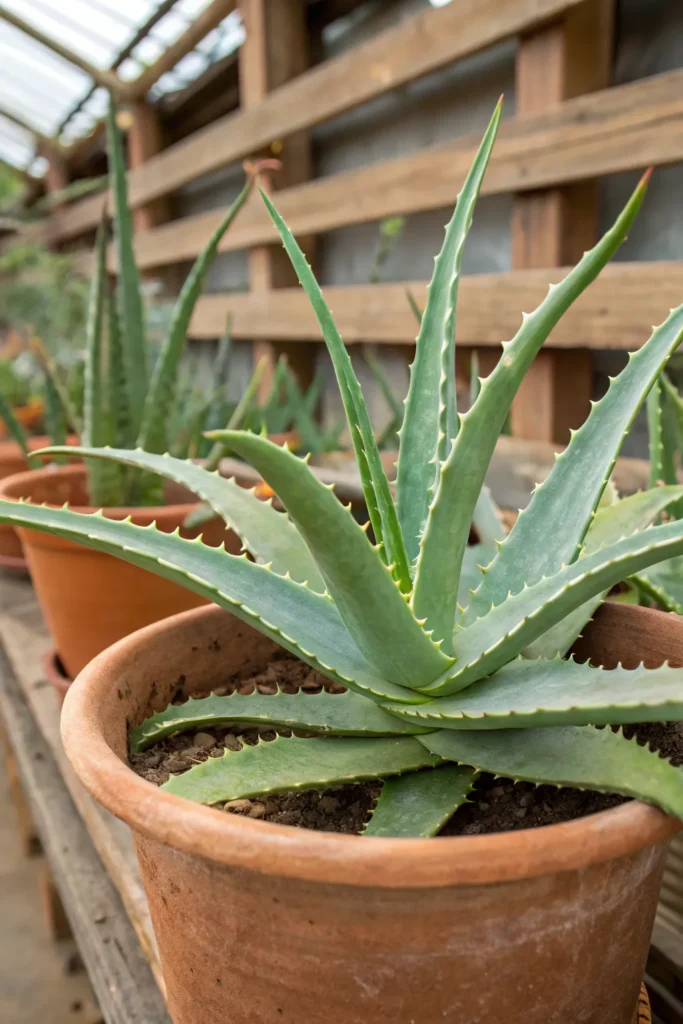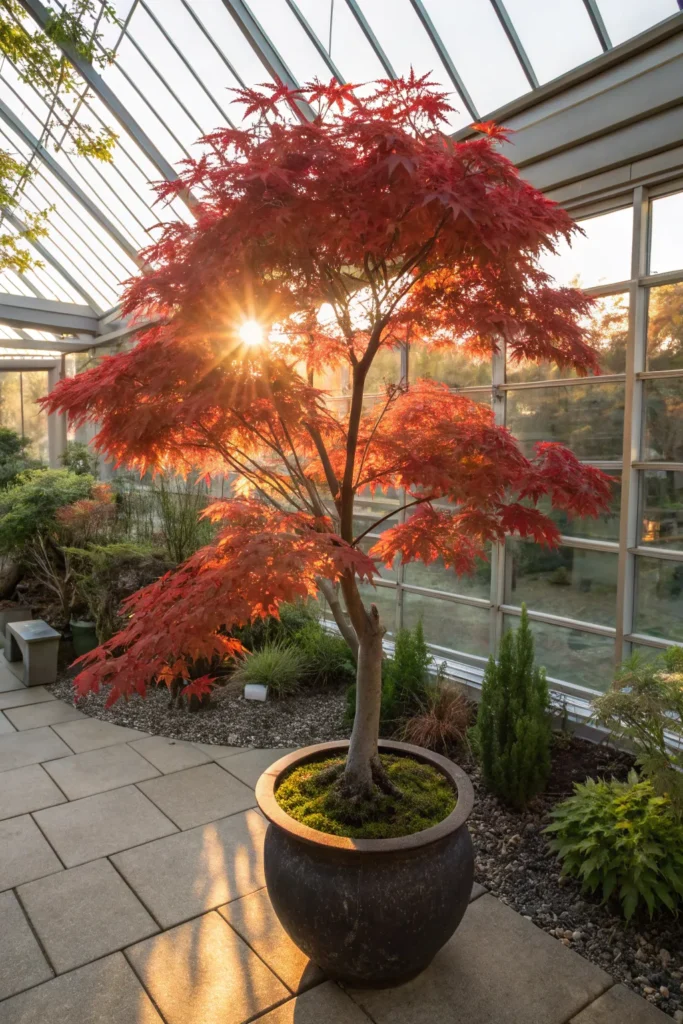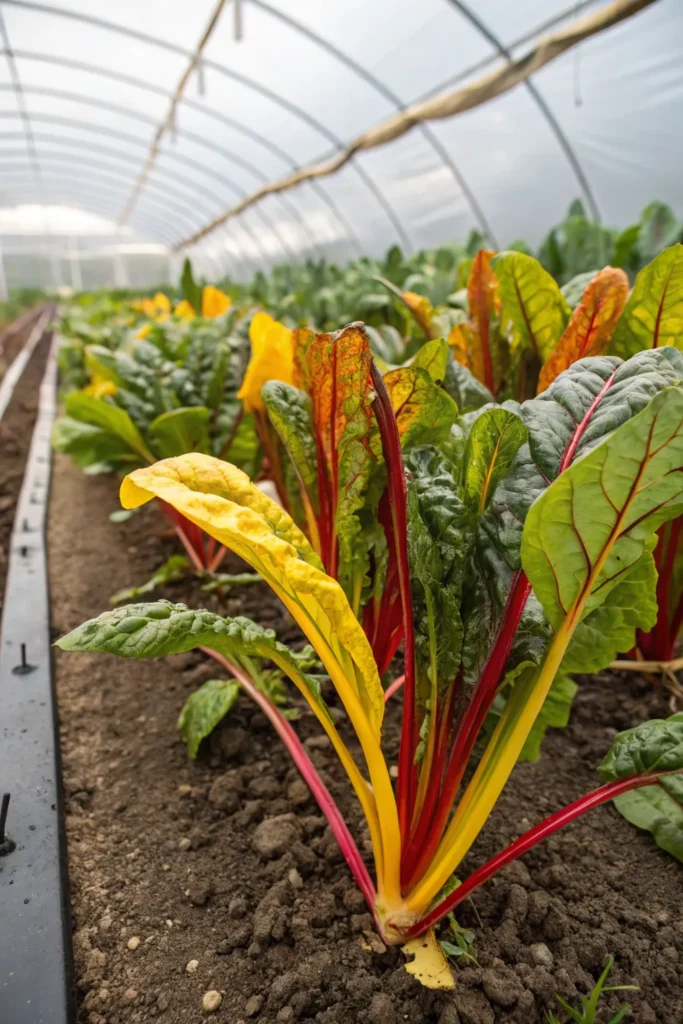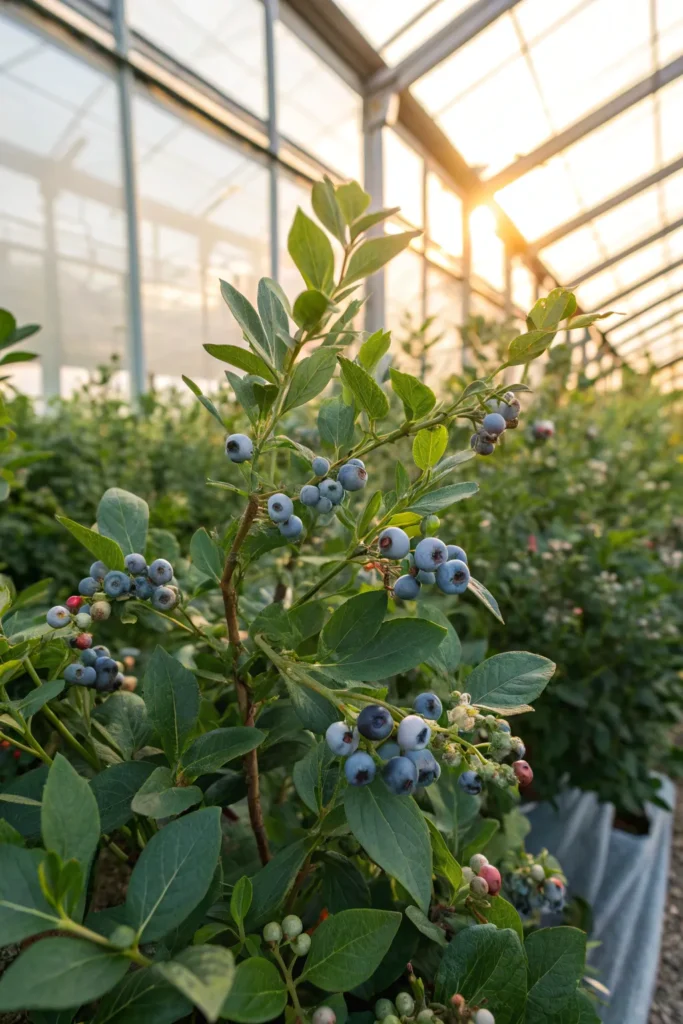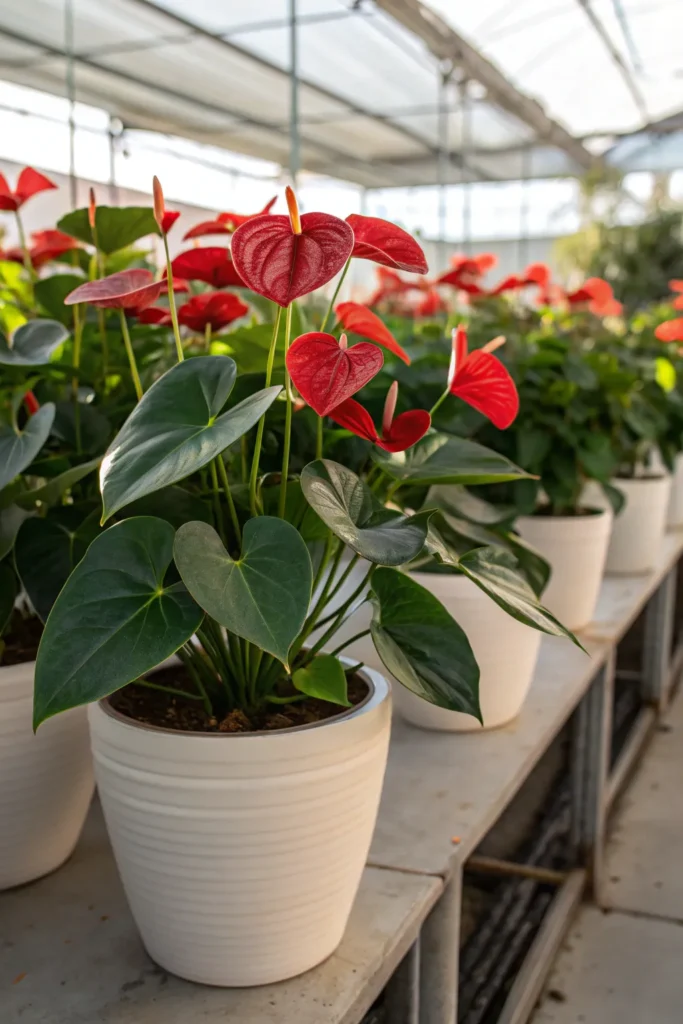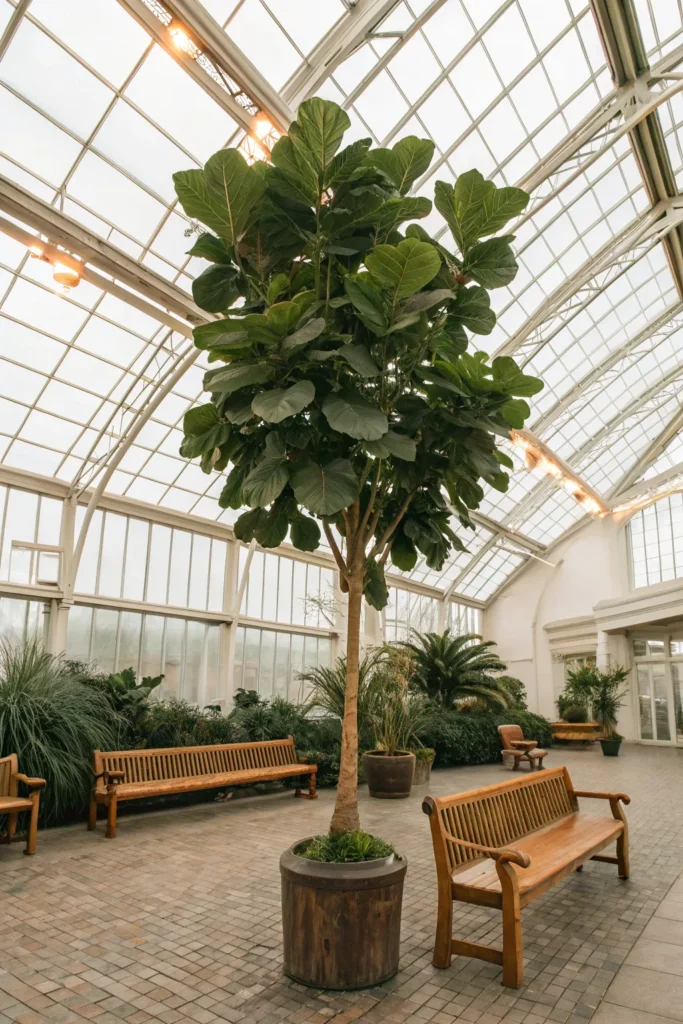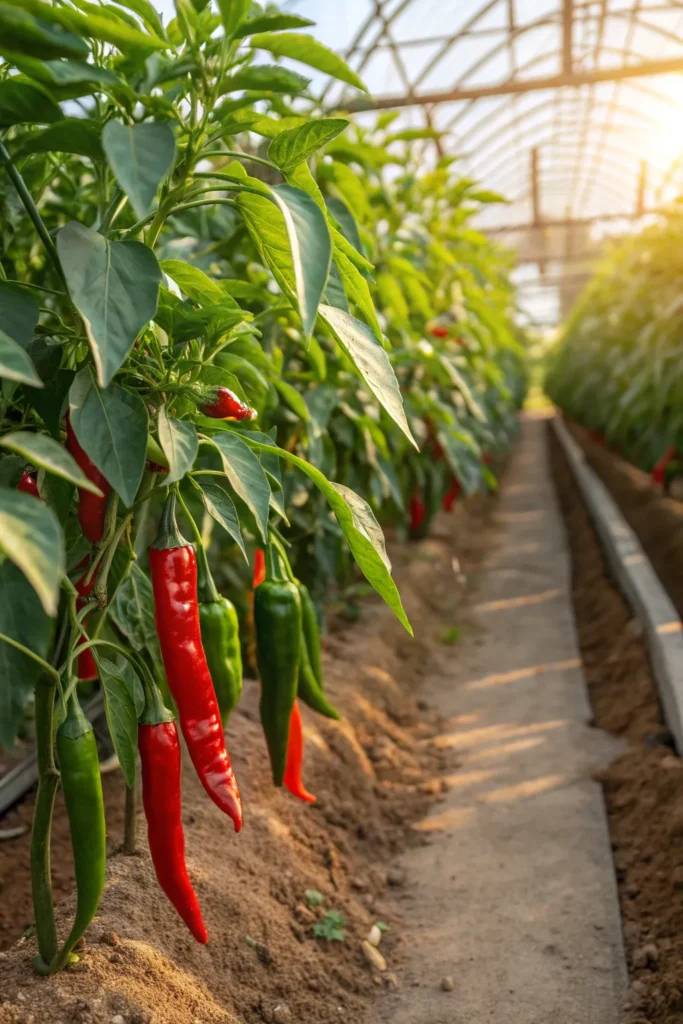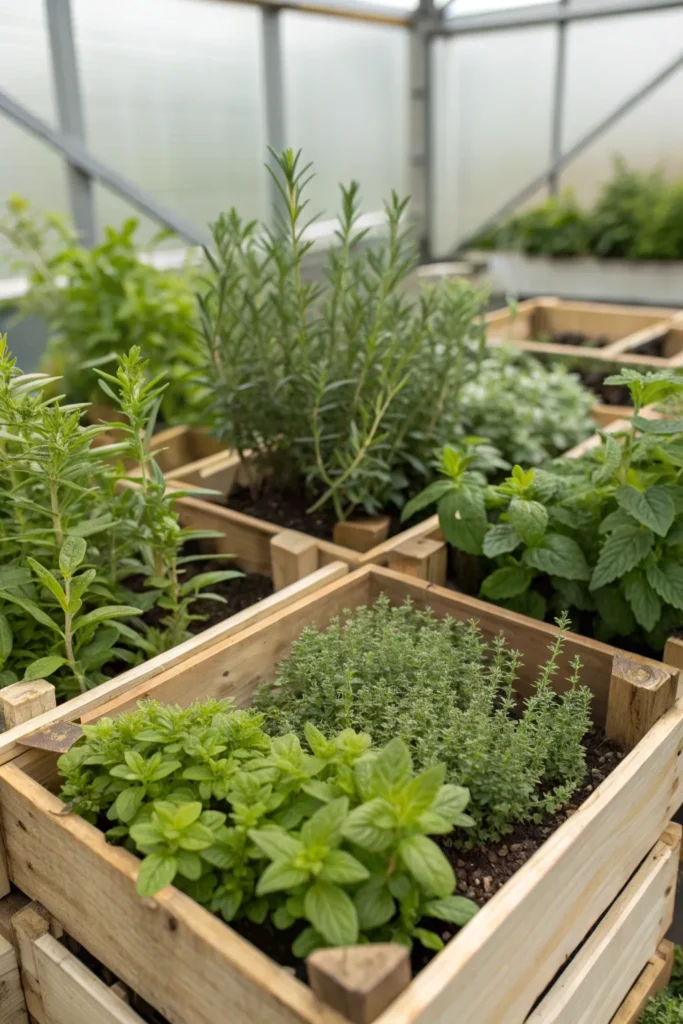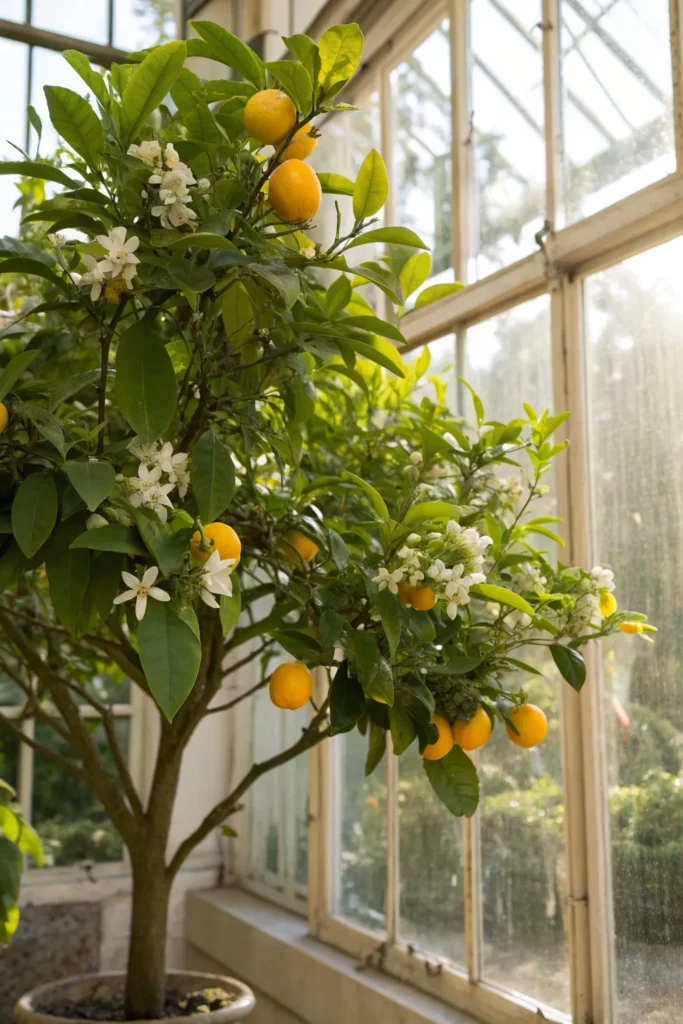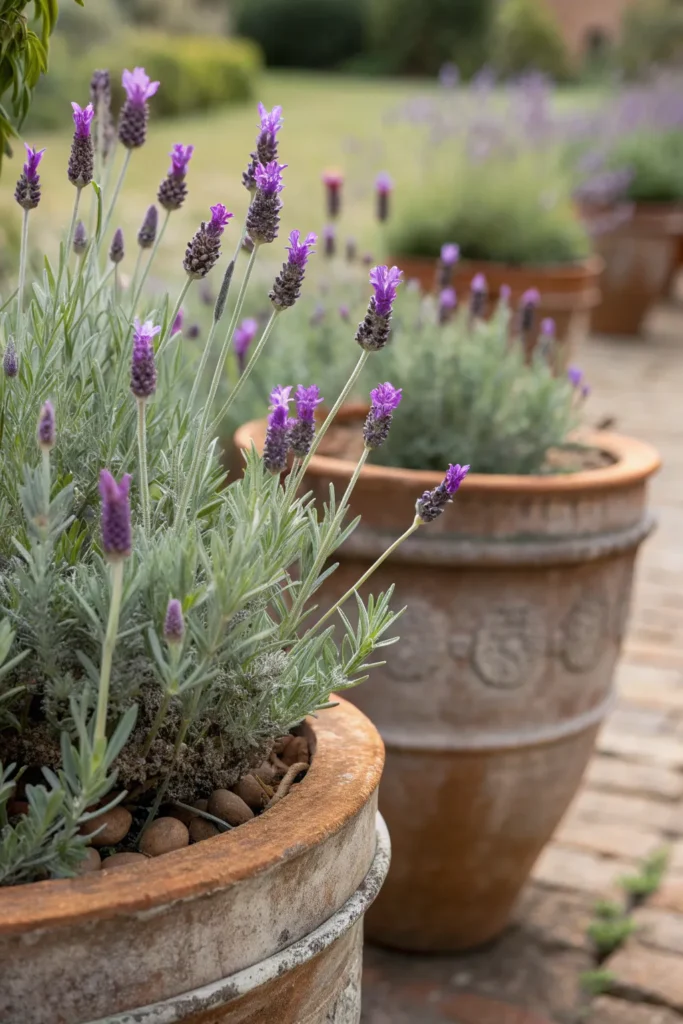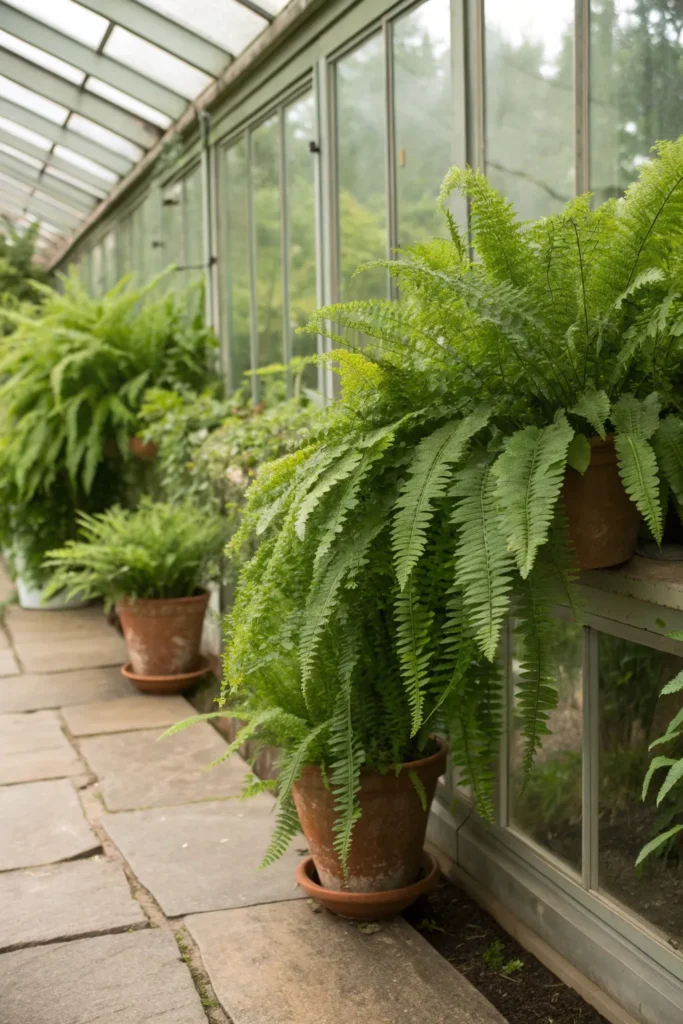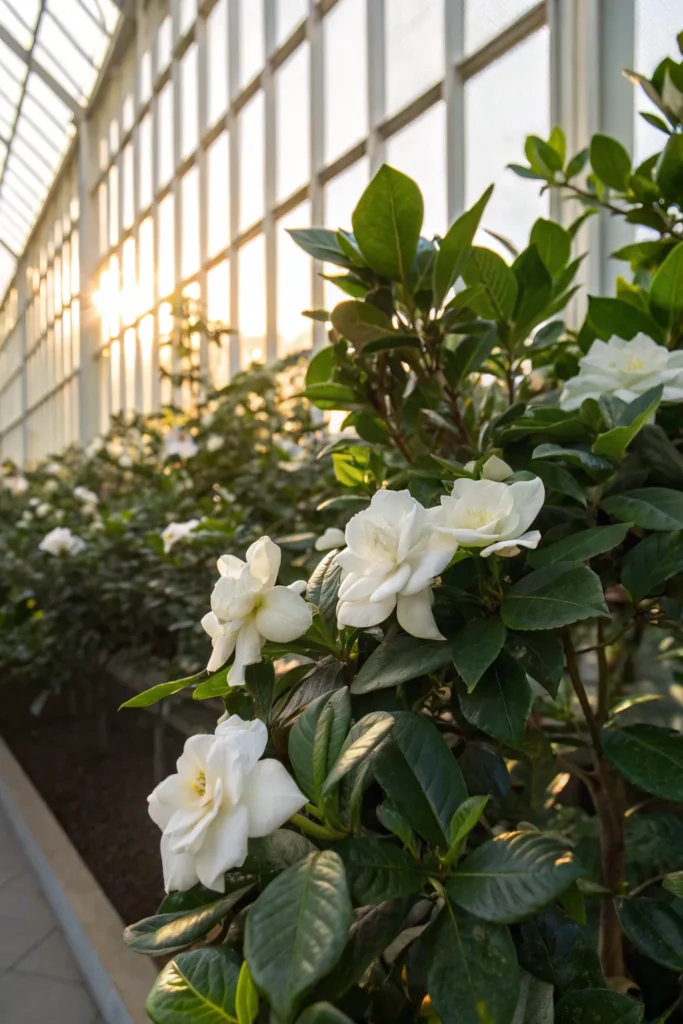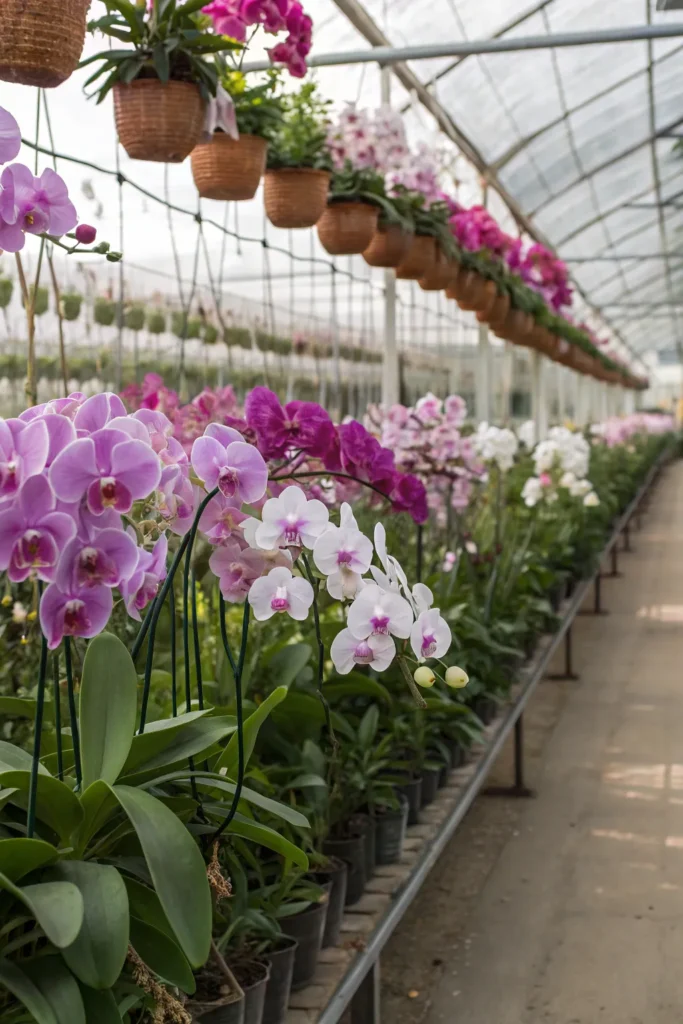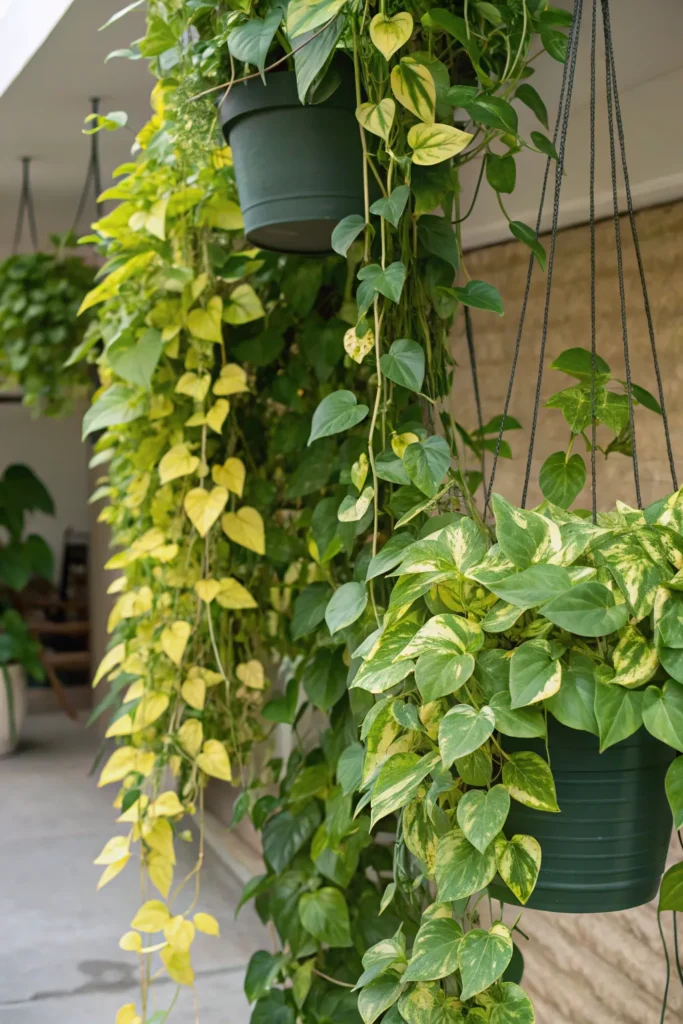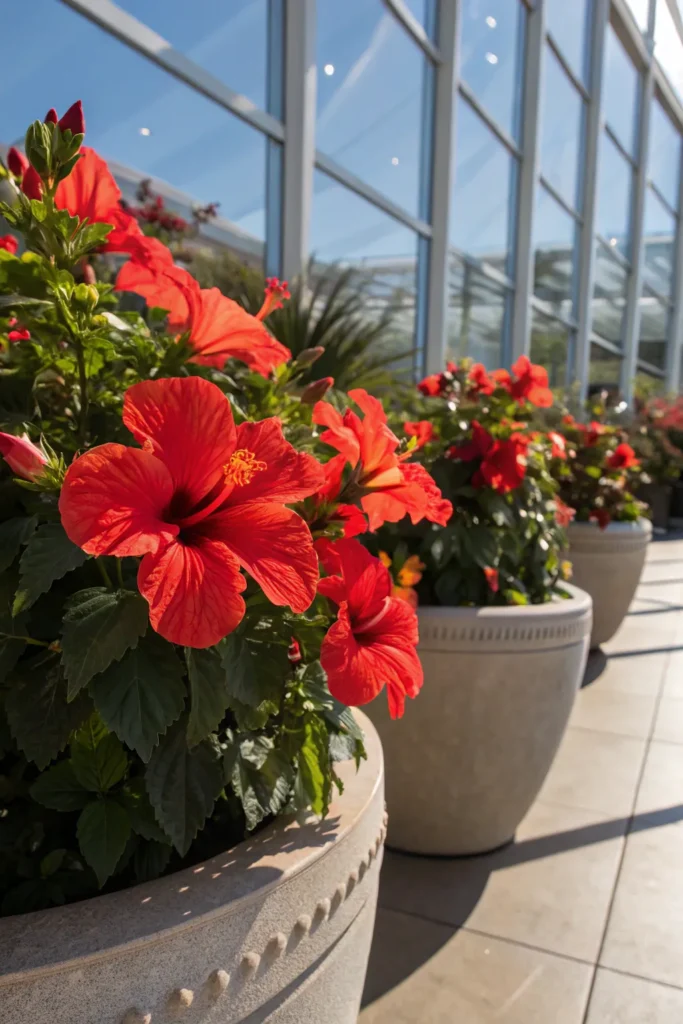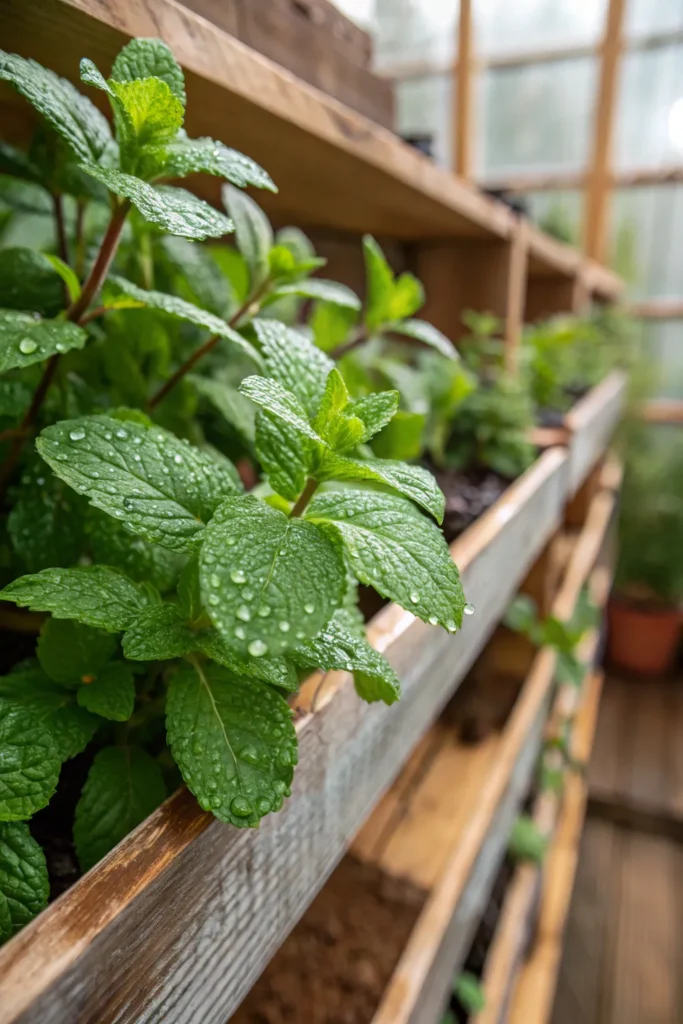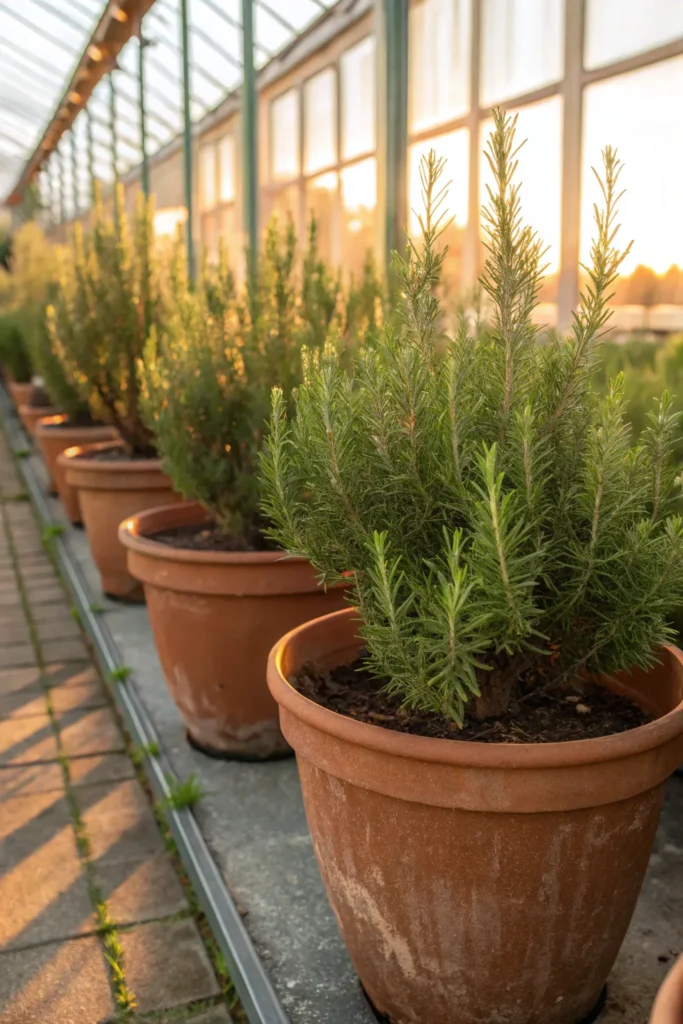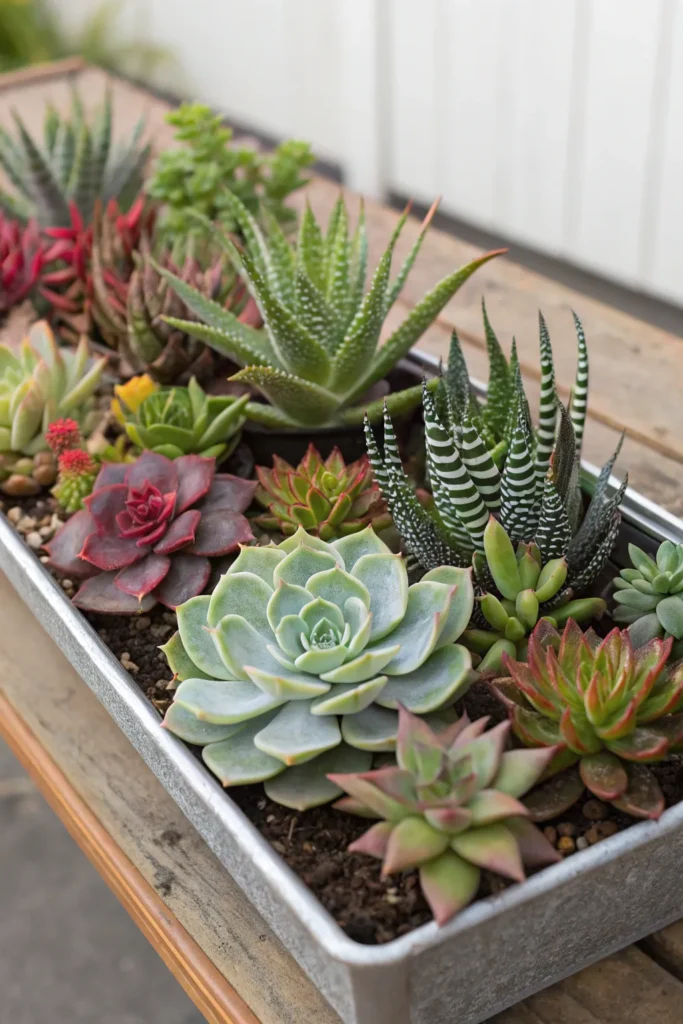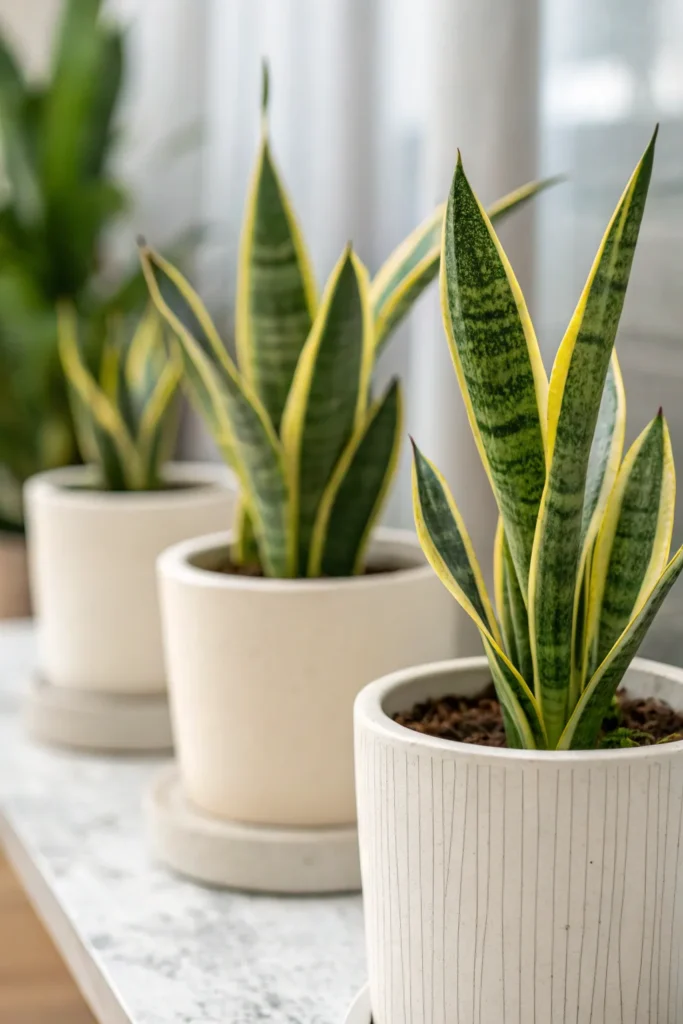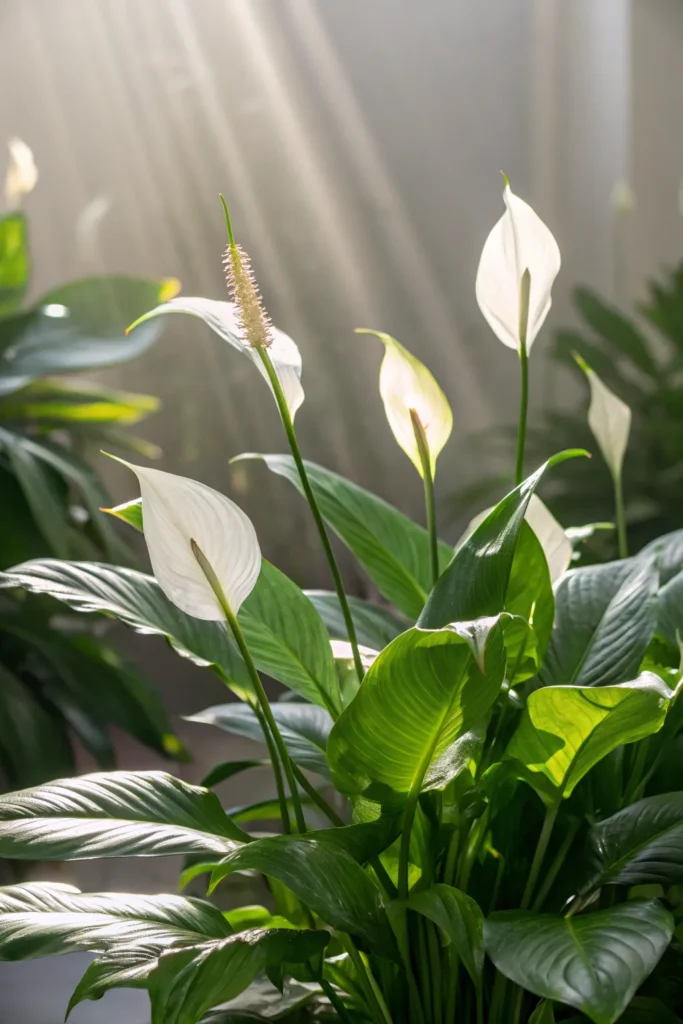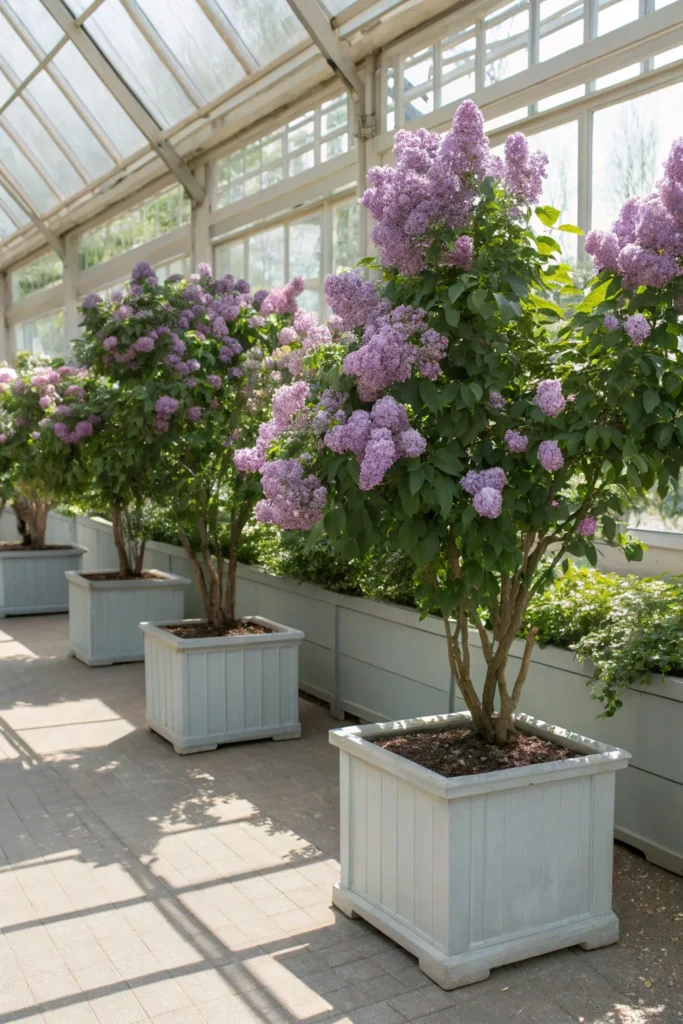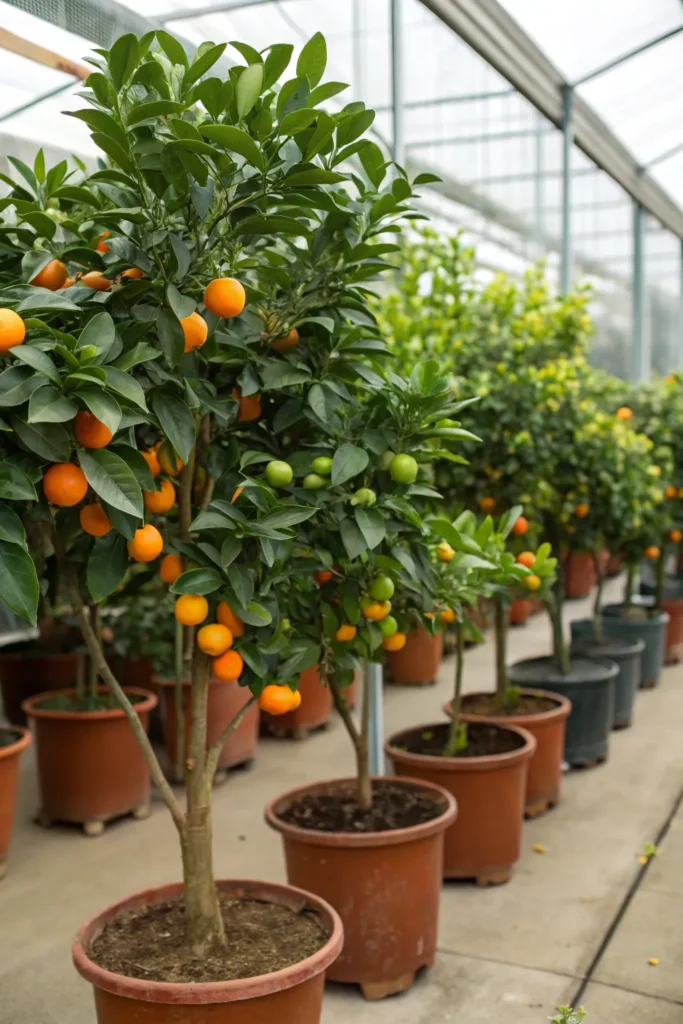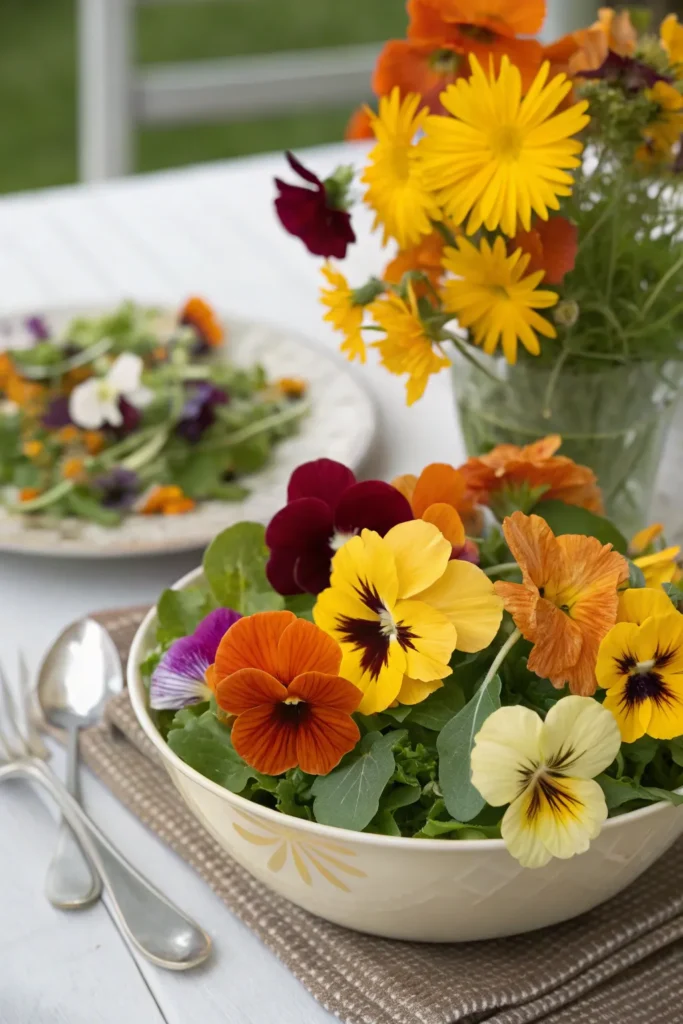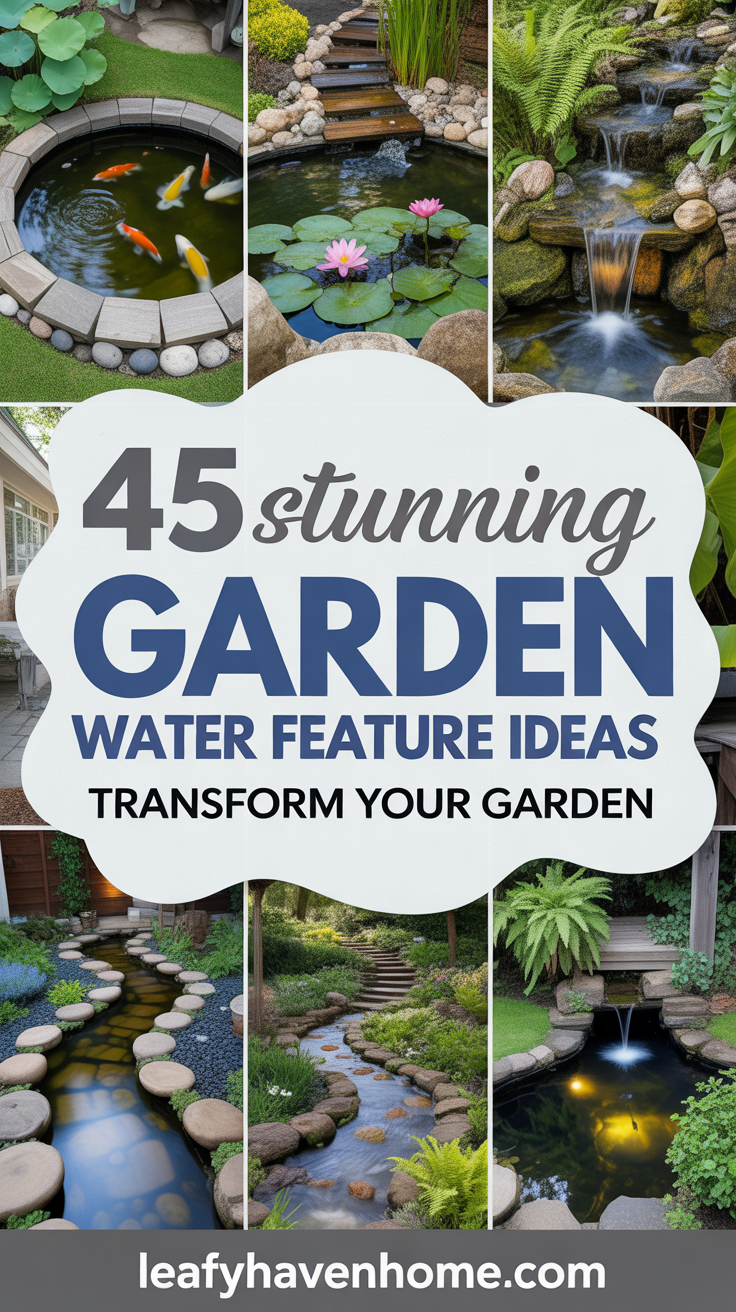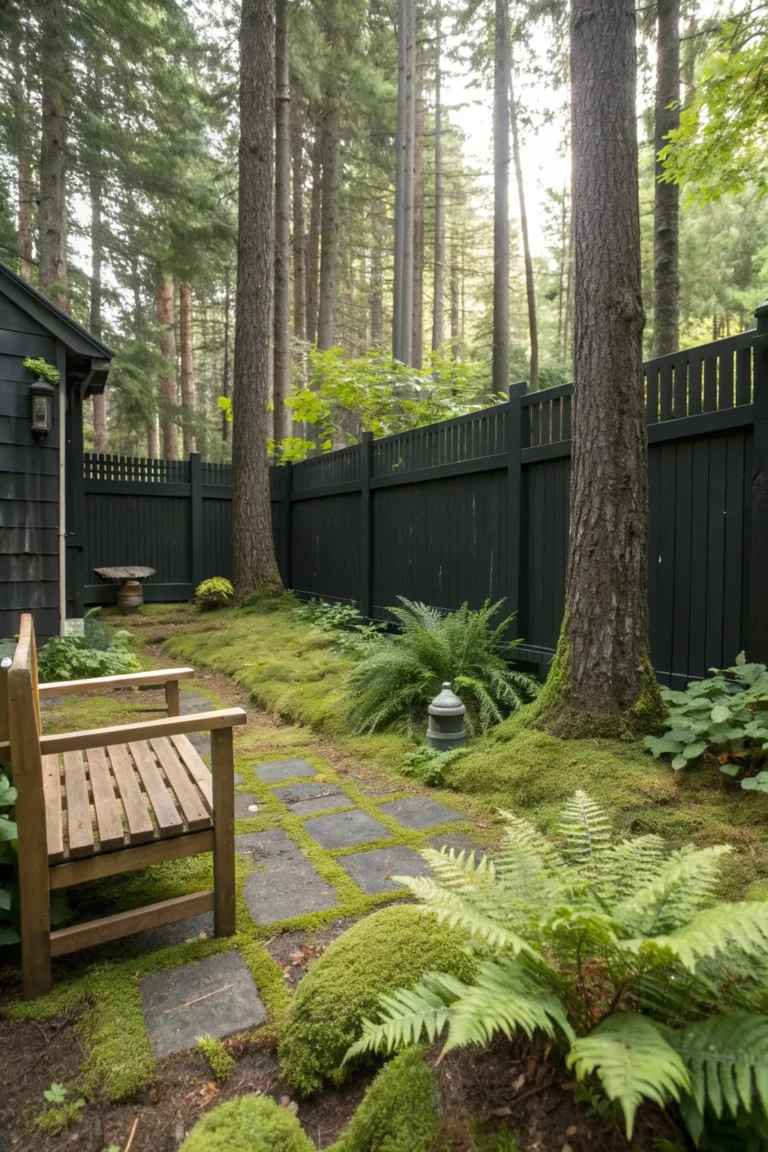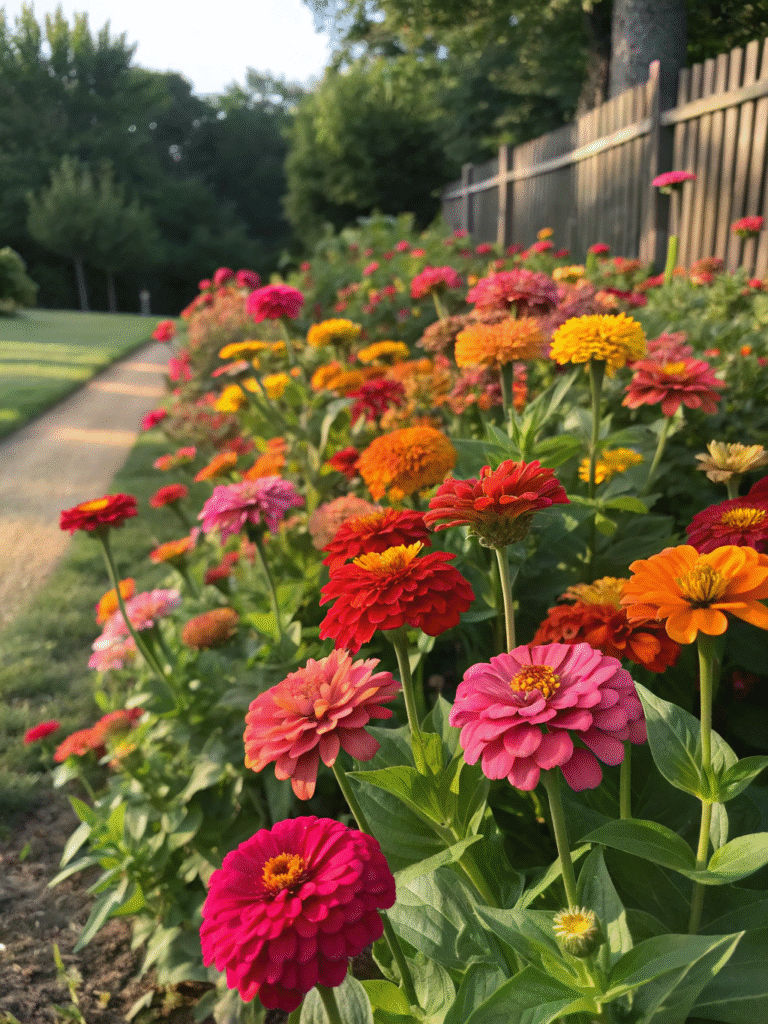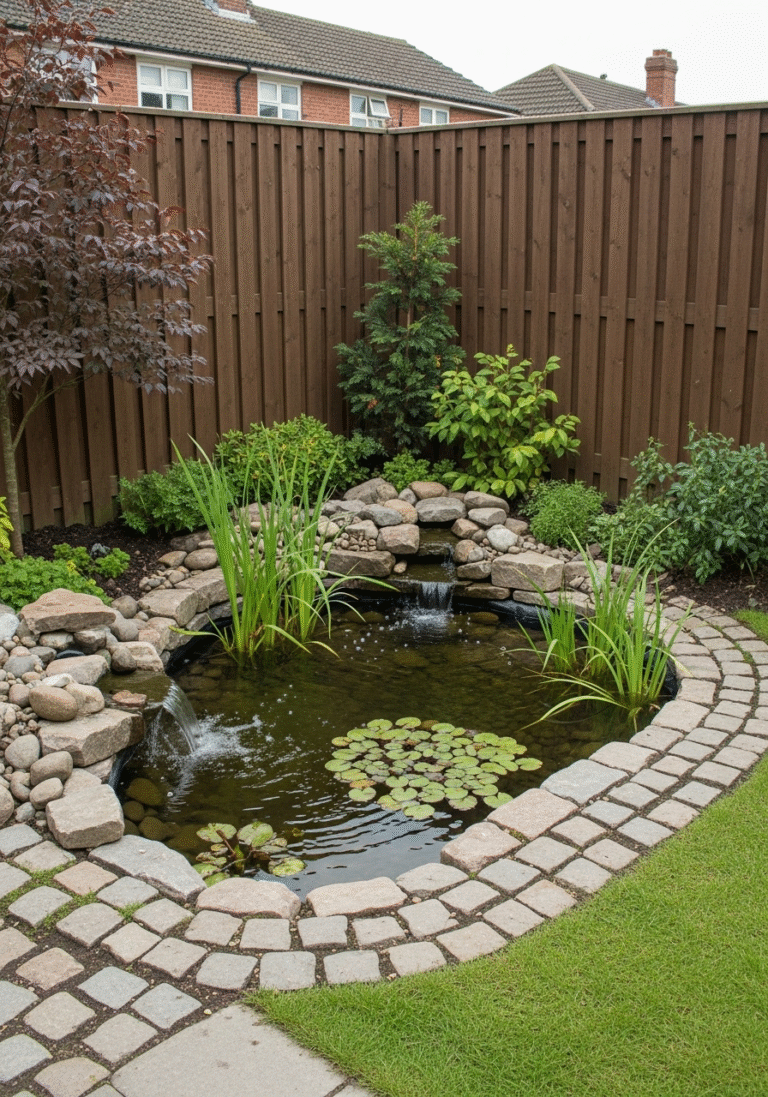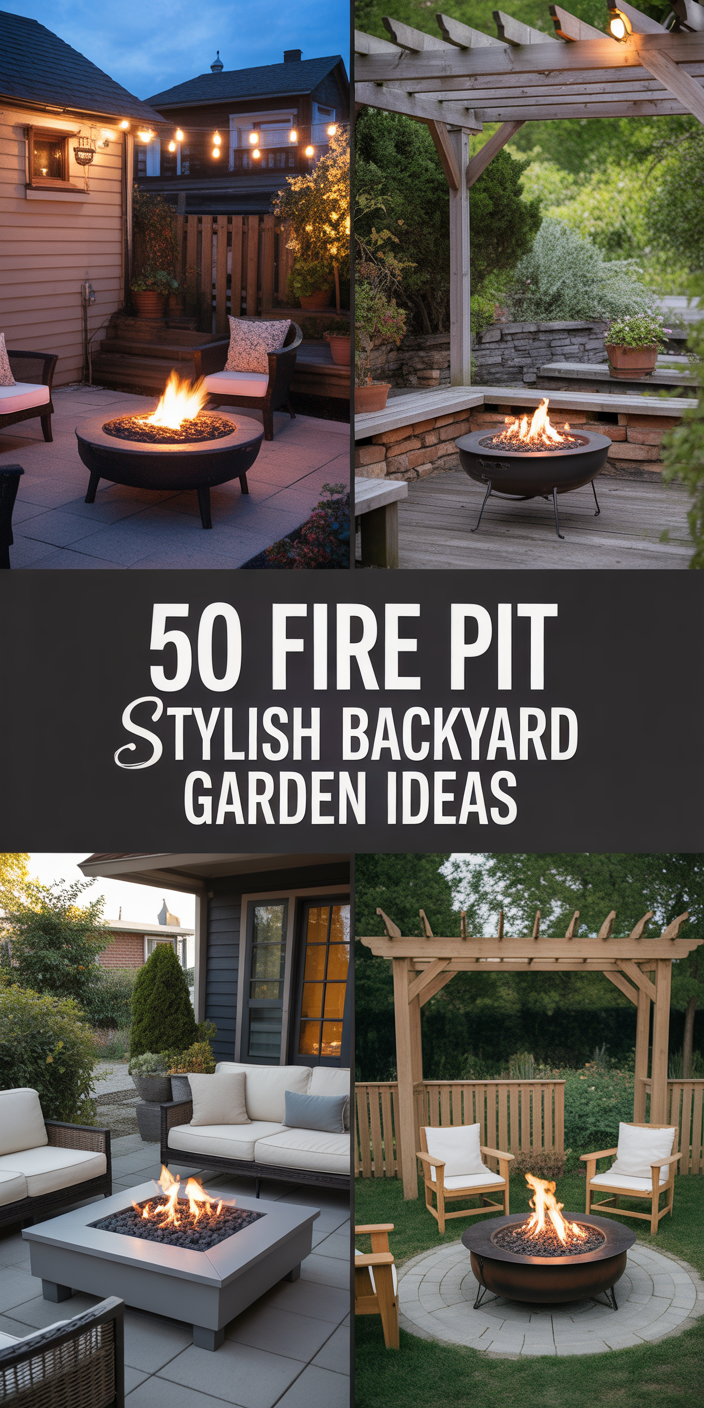30 Gardens With Greenhouses: Discover the Ultimate Plant Paradise
I’ve always believed that the magic of gardening lies in creating spaces that feel alive all year long. When I first stepped into a greenhouse garden, I was amazed at how it sheltered delicate plants while letting bold, vibrant ones flourish. Gardens with greenhouses aren’t just practical—they’re little sanctuaries where beauty and function meet.
Over the years, I’ve experimented with everything from tomatoes and herbs to ferns and orchids in my own greenhouse. Each season taught me something new, and every plant added its own charm to the space. What I love most is how these gardens feel like a private retreat, no matter the weather outside.
In this article, I’ll share 30 greenhouse ideas I’ve found inspiring—plants and layouts that can help you design your own thriving paradise at home.
In this article, we'll cover
- 30 Stunning Greenhouse Plant Ideas
- 1) Heirloom Tomatoes
- 2) Lemon Trees
- 3) English Cucumbers
- 4) Water Lilies
- 5) Basil Varieties
- 6) Strawberry Plants
- 7) Aloe Vera
- 8) Japanese Maple Trees
- 9) Swiss Chard
- 10) Blueberry Bushes
- 11) Anthuriums
- 12) Fiddle Leaf Fig
- 13) Chili Peppers
- 14) Herb Garden Mixtures
- 15) Meyer Lemons
- 16) Lavender Pots
- 17) Venus Flytraps
- 18) Indoor Ferns
- 19) Gardenia Blossoms
- 20) Orchid Collections
- 21) Pothos Varieties
- 22) Hibiscus Plants
- 23) Mint Plants
- 24) Rosemary Shrubs
- 25) Succulent Assortments
- 26) Snake Plants
- 27) Peace Lilies
- 28) Lilac Bushes
- 29) Dwarf Citrus Varieties
- 30) Edible Flowers
- Year-Round Greenhouse Gardening Tips
- Designing a Greenhouse-Friendly Garden Layout
- Conclusion
30 Stunning Greenhouse Plant Ideas
1) Heirloom Tomatoes
When I first started experimenting, heirloom tomatoes were the stars of my setup. They thrived in the controlled environment, producing fruits that were juicier and far more flavorful than store-bought varieties.
What surprised me most was the variety—striped, yellow, and deep crimson fruits that looked as beautiful as they tasted. I loved pairing them with fresh basil for quick salads. Growing them also made me realize how rewarding it is to combine edible plants with decorative ones, much like blending veggies with flowers in small backyard garden ideas.
2) Lemon Trees
The first time my lemon tree bloomed, the fragrance filled the space in the most uplifting way. I couldn’t believe such a small tree could create such a big atmosphere.
Lemons take a little patience, but the reward of harvesting fresh fruit to add to teas or desserts is unbeatable. The glossy green leaves make the tree feel ornamental as well as practical. Every time I see new buds forming, it reminds me of summer holidays in warmer climates—it’s like capturing sunshine indoors.
3) English Cucumbers
English cucumbers quickly became one of my favorites because they’re so crisp and refreshing. I trained them to grow vertically, which saved space and kept the cucumbers straight and clean.
Harvesting them felt effortless, and I enjoyed slicing them fresh for light snacks. Growing cucumbers this way also encouraged me to think creatively about plant layouts. That’s how I ended up exploring garden seating ideas to make the space both functional and comfortable for relaxing with a snack in hand.
4) Water Lilies
I wanted my space to feel calming, not just productive, so I introduced a small water feature with lilies. The transformation was instant—it went from a simple growing area to a sanctuary.
The sight of lilies floating gracefully on still water gave me a sense of peace every time I entered. They also helped cool the area, balancing the atmosphere for other plants. Watching them bloom was like adding a piece of art to the space, and I realized how important it is to blend beauty with practicality.
5) Basil Varieties
Basil was one of the easiest herbs I tried, and it quickly turned into a must-have. From sweet basil to Thai and purple varieties, each one brought its own unique fragrance and flavor.
I loved stepping in and picking a few leaves to add to pasta, soups, or homemade pesto. The constant supply of fresh herbs made cooking at home even more enjoyable. It also encouraged me to explore herb garden walls, where basil pairs beautifully with other aromatic herbs.
6) Strawberry Plants
One of my happiest discoveries was how well strawberries grew in containers. Their trailing vines and bright red fruits brought such a cheerful vibe. I remember sneaking in to pick a handful on warm afternoons—it felt like a treat straight from nature.
The blossoms are just as pretty as the berries, and they give the space a playful charm. Growing them in raised pots made harvesting easier and added height variety. For me, they became both a snack source and a design feature, much like adding texture with garden arches.
7) Aloe Vera
I’ve always kept aloe vera around because of its healing properties. It’s a plant that asks for very little but gives so much in return. I often break off a leaf to soothe burns or skin irritation, and having it right at hand feels invaluable.
The fleshy green leaves also add a bold, architectural element to the space. I found that aloe pairs beautifully with other succulents, creating an almost desert-like corner that requires little care. It’s one of those plants I’ll never be without.
8) Japanese Maple Trees
The first time I added a Japanese maple, I was struck by the colors—it felt like autumn had moved inside. The delicate, lace-like leaves brought so much elegance, and watching them shift shades over time was mesmerizing.
Even in smaller spaces, these trees create a focal point that feels grand. I placed mine in a large pot, and it instantly elevated the area, much like how garden mirror ideas can add unexpected depth. Their presence turns a simple corner into a scene worth pausing to admire.
9) Swiss Chard
Swiss chard became one of my go-to greens because it’s both beautiful and practical. The rainbow-colored stems—red, yellow, and orange—look striking against deep green leaves.
I loved harvesting the younger leaves for fresh salads and letting some grow larger for sautés. It felt like having an edible display of color, a mix of function and art. The more I grew it, the more I appreciated how it could double as both a nutritious crop and a decorative feature in my growing space.
10) Blueberry Bushes
Planting blueberries was one of the most rewarding choices I made. The delicate white blossoms in spring, the juicy berries in summer, and the fiery red leaves in fall meant there was always something to enjoy.
They didn’t just provide fruit; they created a year-round display of beauty. I kept them in large pots to control the soil acidity, and they thrived with a bit of care. I loved the idea of combining them with features like garden water features to create a truly serene corner.
11) Anthuriums
I’ll admit, the first time I grew anthuriums, I was more interested in their glossy leaves than the flowers. But once those bold, waxy blooms appeared, they became the centerpiece of the space.
The vibrant reds and pinks lasted for weeks, adding an almost tropical vibe. I often placed them near seating to enjoy up close, just as I like creating cozy spots with garden nook ideas. Their sculptural look adds elegance, making them perfect for anyone wanting a touch of luxury.
12) Fiddle Leaf Fig
When I first brought in a fiddle leaf fig, I wasn’t sure it would do well. To my surprise, it thrived and quickly became the tallest statement plant in the room.
Its broad, leathery leaves are stunning, and I love how they catch the light. It does require a bit of patience with watering and placement, but once it finds its happy spot, it truly shines. Every visitor notices it, and it always sparks conversation.
13) Chili Peppers
I’ve always had a soft spot for chili peppers because they bring both color and spice into life. Watching the fruits turn from green to vibrant red is so satisfying.
They’re easy to grow in pots, and I enjoy experimenting with different varieties—some mild, others fiery. Harvesting fresh peppers for cooking makes every meal more exciting. Adding them alongside flowers reminded me of how mixing function and design, like with gardens with wild flowers, creates a lively atmosphere.
14) Herb Garden Mixtures
One of the most practical choices I made was dedicating a corner to mixed herbs. Having rosemary, mint, thyme, and oregano together felt like bringing the kitchen pantry into my growing space.
I loved the sensory experience—brushing past them released amazing scents that made me feel instantly refreshed. Plus, being able to snip herbs while cooking was a game-changer. The best part? They thrive together with little fuss, making them both low-maintenance and rewarding.
15) Meyer Lemons
I still remember the first time I harvested a Meyer lemon—it was sweeter and less tart than any lemon I’d ever tasted. The fragrance filled the air, and I felt like I had captured a piece of the Mediterranean at home.
The tree itself is just as beautiful as the fruit, with glossy leaves and delicate blossoms. I loved positioning it where I could admire it daily, the same way I enjoy incorporating decorative elements like garden gate ideas into outdoor spaces. It became a true highlight of my collection.
16) Lavender Pots
Lavender was a plant I added for its fragrance as much as its beauty. Stepping inside and catching that calming scent instantly made the space feel more like a retreat.
The soft purple blooms paired with their silvery foliage created such a soothing color palette. I enjoyed placing them in terracotta pots, which not only looked rustic but also made moving them around easier. Lavender taught me how important scent can be in shaping the atmosphere of any garden.
17) Venus Flytraps
I’ve always loved unusual plants, and Venus flytraps are definitely conversation starters. Watching them close their traps was fascinating, almost like a bit of nature’s magic at work.
They required more attention to humidity and water than other plants, but the reward was worth it. Kids especially found them entertaining, and they became a fun way to learn about plant diversity. Much like creating playful outdoor spots with gardens with kids play areas, these plants brought a sense of curiosity and wonder to the space.
18) Indoor Ferns
Ferns were my go-to for adding lush greenery. Their delicate fronds created a soft, layered look that balanced well with bold-leafed plants.
I loved how they instantly filled empty corners with texture and movement. They also thrived in shadier spots, which helped me make use of areas that weren’t suited for sun-loving plants. Their versatility made them a staple in my setup, always adding a touch of elegance.
19) Gardenia Blossoms
I’ll never forget the first time my gardenia bloomed—the fragrance was rich, sweet, and filled the entire space. It was like stepping into a natural perfume shop.
The creamy white blossoms stood out against glossy green leaves, creating a timeless, romantic feel. Although gardenias can be a little temperamental with humidity, the effort was worth it. They reminded me of how adding a focal plant, much like an arbor in the garden, can completely change the character of a space.
20) Orchid Collections
Orchids always felt intimidating until I actually tried them. Once I learned their rhythms, they became one of the most rewarding plants to grow.
Their flowers lasted for weeks, sometimes months, and the variety of colors and patterns kept me inspired. Each one felt like a piece of art, delicate yet bold. Having a small collection turned my setup into something extraordinary, almost like walking into a boutique flower gallery.
21) Pothos Varieties
When I wanted something low-maintenance yet beautiful, pothos quickly became my go-to. Their trailing vines looked stunning draping over shelves or hanging from baskets.
I loved experimenting with different varieties—golden, marble queen, and neon pothos—each one bringing its own charm. They grew so effortlessly that it almost felt like they thrived on being slightly neglected. For me, they added softness and movement, making the entire space feel more alive.
22) Hibiscus Plants
The bold blooms of hibiscus always reminded me of tropical vacations. When mine flowered for the first time, the bright red petals looked like bursts of sunshine.
I kept it in a large pot and gave it plenty of light, which paid off with stunning flowers. The plant also attracted attention every time someone visited. I loved how it instantly transformed the vibe into something exotic, much like incorporating color into patio décor ideas can lift the mood of any outdoor area.
23) Mint Plants
I planted mint for practical reasons, but it ended up being one of the most refreshing additions. Every time I brushed past it, the crisp scent filled the air.
I loved using fresh leaves in teas and cocktails, and it grew so abundantly that I never had to worry about running out. Containing it in pots kept it from spreading too much, and it quickly became a favorite for its mix of function and fragrance.
24) Rosemary Shrubs
Rosemary became a staple for me because it was both useful and ornamental. Its woody stems and needle-like leaves added structure, while the aroma gave the space a Mediterranean feel.
I often clipped sprigs to season roasted vegetables or bread. Over time, it became more than just a cooking herb—it shaped the overall look of the area. Growing rosemary gave me the same satisfaction as designing thoughtful accents like garden entrance ideas, small touches that elevate the entire experience.
25) Succulent Assortments
I’ve always loved the variety succulents bring. Their unusual shapes and colors—from soft blues to deep purples—turned small corners into miniature landscapes.
They were easy to care for and perfect for creating little displays. Mixing tall varieties with rosettes and trailing ones added depth and interest. I often grouped them in shallow trays, which made them feel like living art pieces. They quickly became a reliable choice for both beauty and low maintenance.
26) Snake Plants
Snake plants were one of the easiest additions I ever made. Their upright, sword-like leaves gave the space a bold, modern touch.
They hardly needed attention—just the occasional watering—and yet they stayed green and healthy. I loved how they balanced out more delicate plants, adding structure and height. For me, snake plants proved that even the simplest choices can make a big impact.
27) Peace Lilies
The peace lily became a personal favorite because of its elegant white blooms. I always felt a sense of calm whenever I saw those flowers standing tall against the dark green leaves.
What impressed me most was how well they handled lower light, making them versatile for different corners. Caring for them also made me more mindful of air quality, since they’re known to be natural purifiers. Their presence reminded me of the way garden lighting ideas can instantly change the mood of a space.
28) Lilac Bushes
Bringing lilac bushes into my setup was like adding spring in a pot. The clusters of soft purple flowers filled the air with a fragrance that instantly transported me back to childhood gardens.
They do need space and pruning, but the reward is spectacular when those blooms arrive. For me, lilacs turned into more than just plants—they became a memory trigger, tying the present to the past in the most beautiful way.
29) Dwarf Citrus Varieties
I decided to try dwarf citrus varieties after my success with lemons, and they were just as rewarding. Small oranges and limes added vibrant color while giving me fruit for drinks and desserts.
The compact size made them easier to manage, and I loved the way their glossy foliage added a fresh, cheerful vibe. Much like planning around small courtyard garden ideas, these little trees proved that size doesn’t limit beauty or productivity.
30) Edible Flowers
Edible flowers were one of the most delightful surprises I tried. Nasturtiums, pansies, and calendula brought bursts of color while also offering unique flavors for salads and desserts.
It felt magical to decorate dishes with petals I had grown myself. The blend of beauty and practicality made edible flowers stand out, turning every meal into something special. I loved how they blurred the line between gardening and cooking, a reminder that nature’s gifts are endless.
Year-Round Greenhouse Gardening Tips
Over time, I learned that success with greenhouse plants isn’t just about what you grow—it’s about how you care for them through the seasons. My biggest lesson was that each season brings its own challenges and rewards.
Here are some of the tips I’ve found most valuable:
- Spring: I focus on seedlings and fast growers like lettuce or tomatoes. Ventilation is key to prevent overheating.
- Summer: Shading becomes essential. I’ve used cloth covers to stop delicate plants from scorching.
- Autumn: This is when I shift to cool-season crops and add flowers like chrysanthemums for color.
- Winter: Heating or insulation is crucial. Even bubble wrap around the frame made a big difference for me.
What I love most is the rhythm of it—each season feels different, yet the space stays alive all year round.
Designing a Greenhouse-Friendly Garden Layout
One of the biggest breakthroughs I had was realizing that the layout of a growing space matters just as much as the plants themselves. A well-planned design made everything flow more naturally and saved me time and effort.
Here are a few layout choices that worked best for me:
- Zoning by Purpose: I grouped edibles like herbs and vegetables near the entrance for easy access, while ornamentals filled the back corners for a scenic view.
- Vertical Space: Using hanging baskets and shelves freed up room for larger pots below. This reminded me of how adding garden arches can elevate even small areas.
- Pathways: Leaving narrow walkways between sections prevented plants from being crushed and made watering easier.
- Blending Indoors with Outdoors: I placed the structure near garden seating ideas so it felt like part of the overall design, not a separate space.
Planning this way turned my setup into more than just a growing area—it became a destination within the garden.
Conclusion
Looking back, creating my own sanctuary has been one of the most rewarding gardening experiences I’ve ever had. Each plant—from tomatoes and herbs to orchids and lilies—taught me something new about patience, design, and the joy of nurturing life.
What I love most is how these spaces grow with you. They’re practical for food, beautiful for relaxation, and inspiring as creative design projects. For me, gardens with greenhouses aren’t just about growing plants—they’re about cultivating a lifestyle that’s peaceful, sustainable, and endlessly fulfilling.
If you’ve ever dreamed of having a place where nature thrives year-round, this is truly the perfect way to bring that dream to life.
Discover more from Leafy Haven Home | Stylish Garden Ideas & Cozy Decor Tips
Subscribe to get the latest posts sent to your email.

